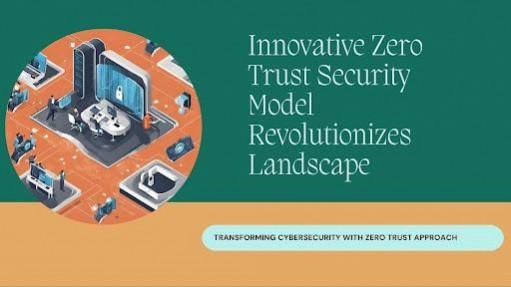
As cyber threats become increasingly sophisticated, conventional perimeter-based security models are proving insufficient. The Zero Trust security model emerges as a revolutionary approach, challenging the conventional notion of trusted internal and untrusted external networks. This paradigm shift emphasizes the necessity for a robust, identity-based approach to access control and continuous trust verification.
According to Gartner, by 2023, 60% of enterprises are expected to phase out VPNs in favor of Zero Trust Network Access (ZTNA), reflecting the growing adoption of this model. Sandeep Reddy Gudimetla's article explores the innovative aspects of the Zero Trust model, highlighting its profound impact on enhancing organizational security.
Zero Trust Principles and Technologies
Micro-segmentation
Micro-segmentation, a cornerstone of Zero Trust architecture, divides the network into smaller segments with specific security policies. This approach limits breach impacts by isolating zones and enforcing strict communication rules. A study by the Enterprise Strategy Group found that 68% of companies implementing micro-segmentation saw a significant reduction in their attack surface and a 58% decrease in detection and containment time.
A study by Acme Corporation, a multinational financial services company, demonstrated the effectiveness of micro-segmentation. By applying this technology across their data centers, Acme Corporation reduced successful lateral movement attempts by 78% and decreased threat containment and remediation time by 92%. Additionally, the company saw a 45% reduction in the costs associated with security management and compliance programs.
Identity-based Access Controls
Zero Trust prioritizes identity-based access controls utilizing technologies such as Role-Based Access Control (RBAC) and Multi-Factor Authentication (MFA), this approach ensures access is granted based on the principle of least privilege. Research by the Ponemon Institute revealed that organizations employing MFA experienced a 50% reduction in average data breach costs compared to those without MFA.
Moreover, a healthcare provider highlighted the benefits of identity-based access controls in a comprehensive analysis. By implementing MFA and RBAC, they observed a 56% decrease in unauthorized access incidents and a 72% reduction in the time required to grant and revoke user access. The adoption of these technologies also resulted in a 95% compliance rate with HIPAA regulations, mitigating the risk of fines and reputational damage.
Continuous Authentication and Monitoring
Continuous authentication and monitoring are essential in Zero Trust environments. Utilizing machine learning, behavioral analytics, and risk-based security measures, Zero Trust systems dynamically revoke access upon detecting anomalous behavior. Gartner predicts that by 2025, 60% of organizations will adopt continuous authentication, reducing identity-related breaches by 30%.
One university demonstrated that risk-based authentication and behavioral analytics improved the detection of suspicious activities by 68% and reduced investigation and response times by 84%, while minimizing privileged access misuse by 75%.
Encryption and Data Protection
Encryption is essential to Zero Trust architectures, ensuring data confidentiality and integrity in transit and at rest. Strong encryption protocols and key management protect sensitive information from unauthorized access and tampering. A Ponemon Institute study found that organizations heavily utilizing encryption had a 28% lower likelihood of data breaches and a 20% reduction in breach costs. DEF Corporation, a global manufacturing firm, reduced data breaches by 95%, accelerated compliance by 62%, decreased data storage costs by 40%, and increased secure data sharing by 55% through encryption.
Effectiveness Evaluation
Empirical studies confirm Zero Trust security models' effectiveness. The Ponemon Institute reported a 63% reduction in data breach costs and a 45% decrease in detection times for adopters. Forrester Research found a 50% reduction in incident control time, showcasing financial and operational benefits. NIST simulations showed Zero Trust reduced insider threat impacts by 79% and lateral attack success rates by 85%, emphasizing its capability to prevent compromise propagation and mitigate malicious insider activities.
Altogether, the Zero Trust security model transforms cybersecurity with proactive measures and continuous trust verification. Incorporating micro-segmentation, identity-based access controls, continuous authentication, and encryption significantly enhances security. Despite challenges, the benefits far outweigh the drawbacks, offering robust protection against evolving cyber threats for modern enterprises.















